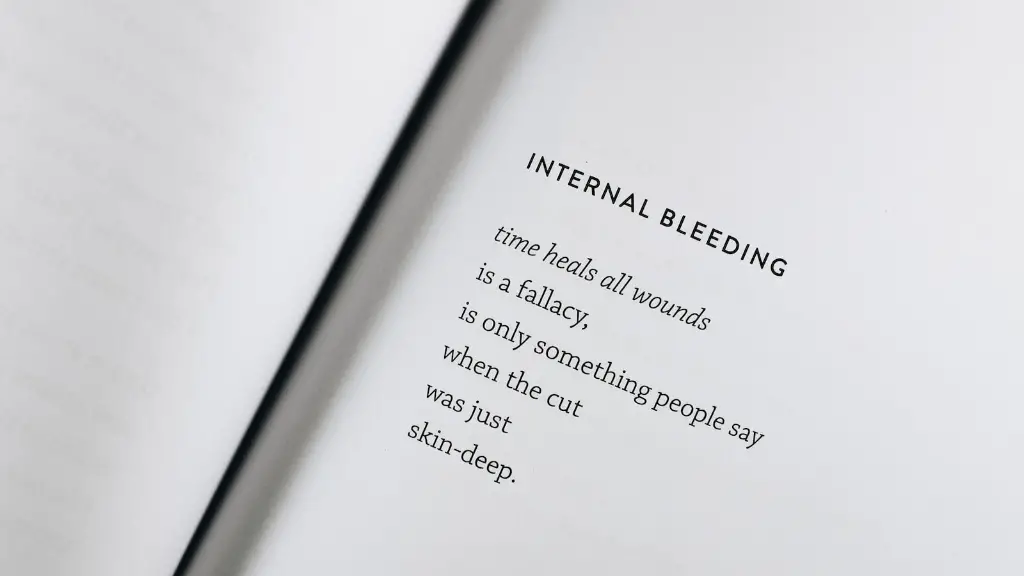Introduction
Limerick poetry is an ancient genre of fun-filled poem characterized by its five-line structure and lively, whimsical rhymes. It goes back centuries, although the form is most often attributed to the Irish poet, playwright, and lyricist Edward Lear. The structure is AABBA, with the first, second, and fifth lines being similar in rhyme and rhythm, and shorter in length than the third and fourth lines. It also usually contains tongue-in-cheek humor and sly references. As a result, limericks have become a popular form among poets, writers, and readers because of their hilarity, tongue-twisting, and their ability to capture a playfulness and lightheartedness in the verse.
Rhythm & Meter
Limerick poetry stands out because of its specific and strict structure, which is what brings out its distinct quality and charm.The rhyme scheme of an AABBA is one-of-a-kind and gives the poem a unique flow to it, as well as making it easier to remember when reading and writing. Additionally, the limerick follows an anapestic rhythm, also known as an anapestic meter, which refers to a pattern of two unstressed syllables followed by a stressed syllable. This rhythm helps the poem to flow quickly, making it enjoyable for both the writer and the reader.
Historical Origin
The origin of the limerick as a literary form is a bit foggy, as many sources suggest it dates back to the Middle Ages, although Edward Lear is most often credited with popularizing the form with his wildly humorous and beloved limerick verses back in the 19th century. Lear wrote ‘book of nonsense’, which featured fun and witty verses and sparked a trend of light-hearted limerick writing. Expanding upon Lear’s influence, other contemporary poets then adapted and changed the form to their own unique styles.
Linguistic Impacts
Perhaps one of the most recognizing features of limerick is its unique use of language. Writers of this form often rely upon pun or double entendre to make their poems particularly funny or thoughtful. Many limericks also use phrases that are considered to be improper grammar or weirdly phrased sentences, adding to the amusing quality. Additionally, limericks tend to include hyperbole for comedic purposes, often exaggerating a situation making it almost too over the top for readers to believe.
Modern Uses
Today, limericks are celebrated around the world and remain a popular form of poetry, especially for children. Writing a limerick often requires a sense of imagination and the ability to think outside of the box, which is why the form remains a great artistic teaching tool in classrooms. Additionally, limericks have been commonly featured in literature, textbooks, and are present in musical forms such as the popular rap song “Lose Yourself” by Eminem.
Limerick vs Traditional Poetry
Though there are great similarities between limerick and other traditional poetry forms such as haiku, there are many differences as well. For example, limericks often poke fun at a situation, while traditional poetry is usually more serious and reflective. Additionally, limericks are usually more playful and lighthearted, whereas traditional poetry tends to evoke emotions of sadness, love, or even nostalgia.
Cultural Significance
The limerick continues to remain an important form of poetry, not only due to its literary purpose as a tool of expression, but also due to its ability to bring together communities and cultures. Limericks can be shared among different languages and regions, fostering a sense of communication and global connectivity. This not only allows people to share laughter through a common language, but also challenges the limitations of language, as limericks often rely heavily upon slang and other informal forms of expression.
Creating Limericks
Creating limericks may seem intimidating at first due to its strict structure. However, it can be done through trial and error, brainstorming, and experimentation. Writers can use whatever tools they have available, from filling in the structure with a word list to using a rhyme dictionary to help establish the rhyming and meter of the poem. Playing around with words can also help as well, as limericks didn’t always follow a strict pattern in the past. Limericks can also be more than written, as other forms of art, such as drawing or singing, can also be great tools to express the poem – the key is to have fun and get creative!
Fun Limericks
Limericks can be used in many different forms and contexts, with some of the most popular and fun being silly or funny limericks. Funny limericks often rely upon the same rhymes and meter as traditional limericks, but take it to the next level by adding comedic twists or introducing unexpected elements in the poem. Some of the most popular and beloved funny limericks include ‘There Was an Old Man of Whitehaven’ by Edward Lear and ‘The Limerick He Wrote In His Jet-black Clothes’ by Stephen Leacock.
Limerick Poem Structure
Limerick poems follow a very specific structure, AABBA, which is what makes them so unique and easily recognizable. The first line introduces the subject of the poem and sets up the scene and mood. The second and third lines add to the setting and provide more details about the subject, whereas the fourth and fifth lines provide a resolution to the poem. This structure makes it so that the poem both flows smoothly and has a resolution, leaving the reader feeling satisfied.
Conclusion
Although limerick poetry has its roots in tradition and history, the examples of limericks today come in many different forms. Whether funny or serious, thoughtful or whimsical, the specific structure of a limerick gives it a unique charm and quality that is recognizable to both writers and readers. Limericks can facilitate cultural conversations and provide entertainment and joy, making them a valuable genre of literature.


